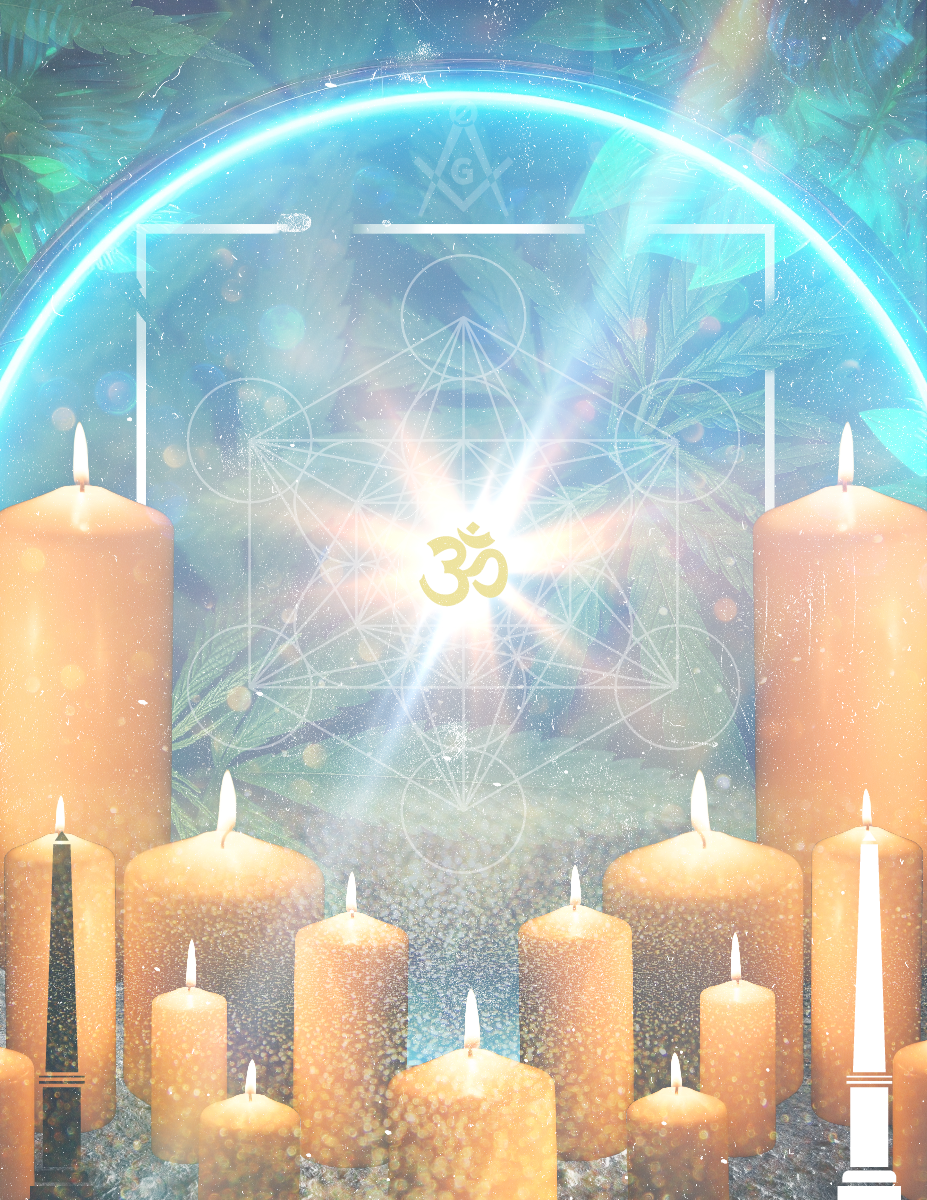Ritual magic, a profound and ancient practice, serves as a gateway to exploring the depths of consciousness, the mysteries of existence, and the unseen dimensions of reality. Rooted in esoteric traditions worldwide, ritual magic offers seekers a transformative path to self-realization, spiritual growth, and communion with the divine. In this essay, we will delve into the essence of ritual magic, its historical origins, its underlying principles, and its role as a mystical journey into the realms of consciousness.
The Essence of Ritual Magic:
Ritual magic, often referred to simply as “magic,” is a multifaceted practice that combines symbolism, intention, and ceremonial actions to create a bridge between the physical and metaphysical realms. At its core, ritual magic seeks to harness the inherent powers of the practitioner’s consciousness and direct them toward specific goals, whether those goals are spiritual, material, or transformative.
Historical Origins:
The origins of ritual magic are ancient and diverse, with practices and traditions originating in various cultures across the globe. Some notable historical influences include:
- Hermeticism: The Hermetic tradition, rooted in the teachings attributed to Hermes Trismegistus, emphasizes the idea of “As above, so below.” Hermeticism forms the foundation of Western esotericism and ritual magic.
- Kabbalah: The mystical Jewish tradition of Kabbalah explores the inner dimensions of reality and the interconnectedness of all things. It has greatly influenced Western esotericism and ritual magic.
- Alchemy: Alchemy, both spiritual and material, plays a significant role in ritual magic, as it seeks to transform base elements into higher states of being, a metaphorical process mirrored in the magician’s quest for self-transformation.
- The Occult Revival: The late 19th and early 20th centuries witnessed a resurgence of interest in the occult and ritual magic, with figures like Aleister Crowley and the Hermetic Order of the Golden Dawn contributing to the modern understanding of magical practices.
Underlying Principles:
Ritual magic operates on several fundamental principles that guide its practice and significance:
- Symbolism: Symbols and archetypal imagery play a central role in ritual magic. Practitioners work with symbols to access the deeper layers of the unconscious mind and to connect with universal forces.
- Intention: Intent is a driving force in ritual magic. The practitioner’s clear and focused intention directs the energy and purpose of the ritual toward a specific outcome.
- Consciousness and Energy: Ritual magic recognizes the connection between consciousness and energy. By altering one’s state of consciousness through ritual, practitioners can access heightened states of awareness and tap into the subtle energies of the universe.
- Sacred Space and Time: Rituals are often performed in sacred spaces and during specific times, aligning with astrological, lunar, or seasonal cycles. This enhances the potency and effectiveness of the ritual.
The Mystical Journey:
Engaging in ritual magic is not merely a series of prescribed actions; it is a mystical journey that can lead to profound personal transformation. The path of ritual magic includes:
- Preparation: Practitioners prepare physically, mentally, and spiritually for the ritual. This includes purification, meditation, and the consecration of tools and instruments.
- The Ritual Act: The core of ritual magic involves the performance of specific actions, often involving invocations, gestures, and the recitation of incantations or prayers. The ritual act serves as a vehicle for the practitioner to connect with higher realms and inner dimensions.
- Transcendence: During the ritual, practitioners may experience altered states of consciousness, a sense of unity with the divine, or moments of profound insight. These transcendent experiences are integral to the mystical aspect of ritual magic.
- Integration: After the ritual, practitioners integrate their experiences and insights into their daily lives. This may involve making changes in thought patterns, behavior, or spiritual practice.
The Role of Ritual Magic in Consciousness Exploration:
Ritual magic serves as a unique avenue for consciousness exploration. It allows practitioners to:
- Explore the mysteries of existence and the interconnectedness of all things.
- Access altered states of consciousness and visionary experiences.
- Converse with archetypal figures, deities, and spiritual beings.
- Transform personal limitations and self-destructive patterns.
- Seek guidance, wisdom, and inspiration from higher sources.
Conclusion:
Ritual magic, the mystical path of consciousness exploration, offers seekers a profound means of self-realization, spiritual growth, and communion with the divine. Rooted in ancient esoteric traditions and practices, it provides a framework for connecting with the deeper aspects of consciousness and the unseen dimensions of reality.
As individuals engage with the symbols, intention, and ceremonial actions of ritual magic, they embark on a transformative journey that transcends the boundaries of the ordinary and opens the door to the extraordinary. Ritual magic invites seekers to embrace the mysteries of existence, harness the powers of consciousness, and embark on a path of self-discovery and spiritual enlightenment.
Bibliography:
- Crowley, Aleister. “Magick in Theory and Practice.” Dover Publications, 1976.
- Regardie, Israel. “The Golden Dawn: The Original Account of the Teachings, Rites, and Ceremonies of the Hermetic Order.” Llewellyn Publications, 2003.
- Knight, Gareth. “A Practical Guide to Qabalistic Symbolism.” Weiser Books, 2007.
- Greer, John Michael. “The New Encyclopedia of the Occult.” Llewellyn Publications, 2003.
- Fortune, Dion. “The Mystical Qabalah.” Red Wheel/Weiser, 2000.
These sources provide valuable insights into the practice of ritual magic, its historical significance, its underlying principles, and its role as a mystical path of consciousness exploration. They offer a comprehensive understanding of the enduring wisdom contained within this ancient and transformative practice.
